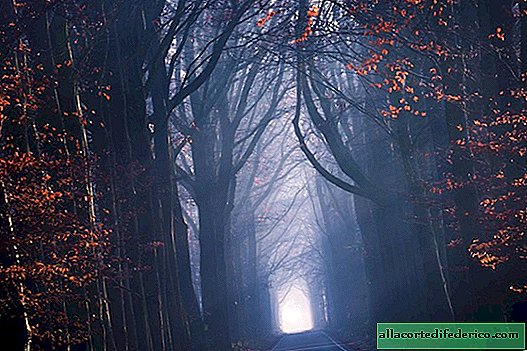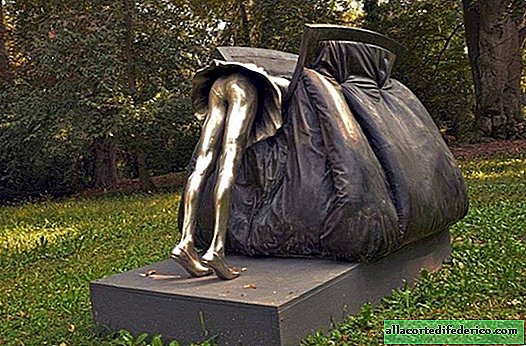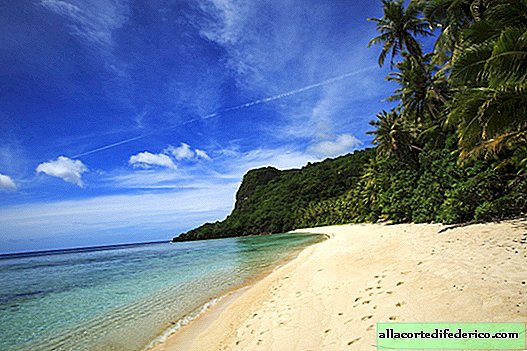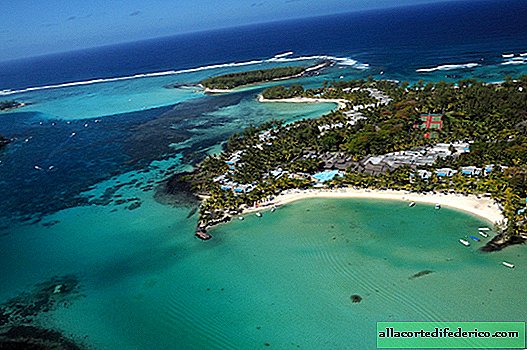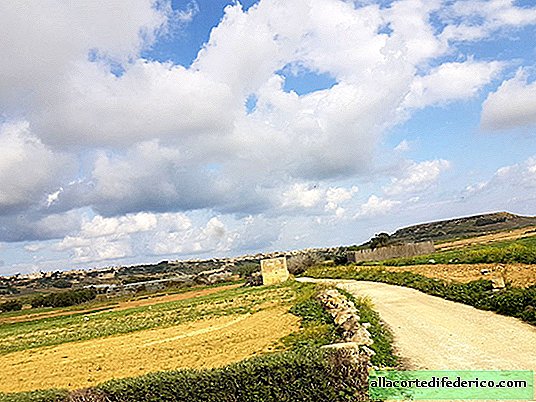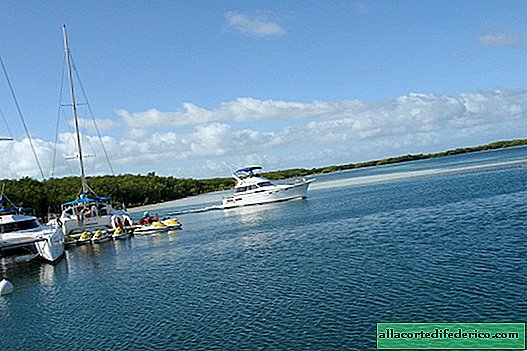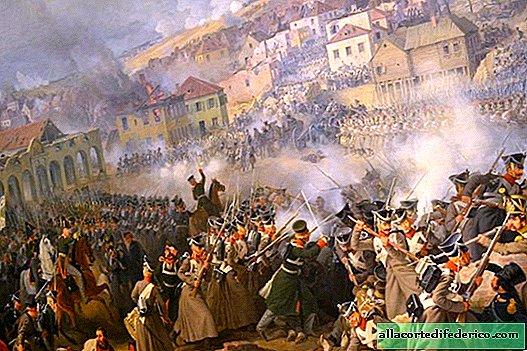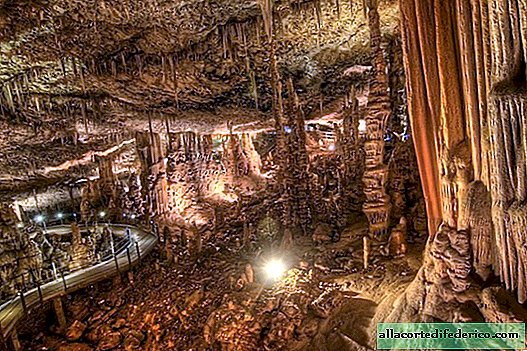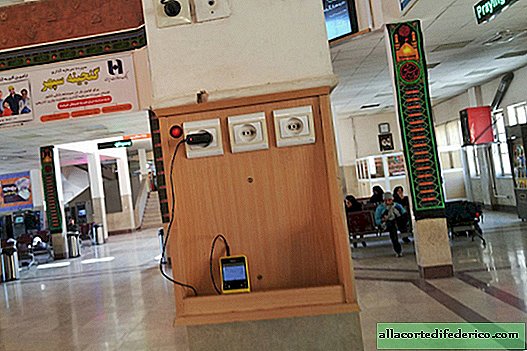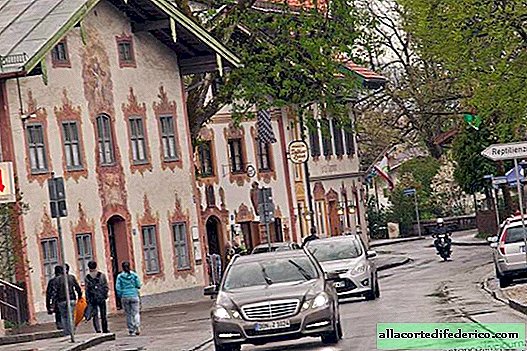Braga - Portuguese Rome, where they like to leave doors open
“In Lisbon they’re talking, in Porto they work, in Coimbra they study, and in Braga they pray”, says the local saying. The cacophony of church bells bursts into the atmosphere of provincial serenity on the streets of Braga, reminding unlucky tourists that the oldest city founded by the Romans is not without reason called the religious center of Portugal.
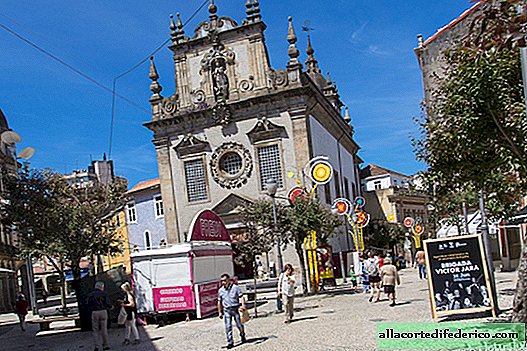
“Braga is a city of contrasts, where a rich historical and spiritual heritage coexists with the boiling energy of students. The concentration of young people here is the highest in Portugal thanks to one of the country's largest universities. In addition to the three dozen churches and basilicas that brought Braga the unofficial nickname“ Portuguese Rome ”, the city able to charm a traveler with a maze of narrow streets of the old city, lush baroque buildings and cozy picturesque parks, delicious local dishes and fantastic shopping, and exploring Vat all the legends and hidden corners of Braga in a relaxed atmosphere - fun things. " With approximately such thermonuclear expression, tourist portals and guides showered with dithyrambs on Portugal's third largest city. When we got out of Porto for a day, we had streets that were not crowded and decorated on the eve of the upcoming Catholic holiday, with retirees strolling imposingly, and there was no smell of the praised youth spirit. Did the resurrection, the sultry heat, or the fact that the walking route almost did not get out of the contours of the Old Town have affected?
Not having any transcendental illusions and not making concrete plans to plunder Braga, we took the train to Port and an hour later with a little, having entered without any hesitation and conspiracy through the front door under the da Porta Nova arch, we disappeared into the ramified web of the historical center . According to experts, the Romans founded a city called Bracara Augustus on the site of the former Celtic settlement a little more than two thousand years ago. Conveniently located on one of the main roads of the Iberian Peninsula, the city, named after Octavian Augustus, who ruled in those years, became the administrative center of the empire and the capital of the province of Gallecium.


The German Suev tribe did not find their Asterix and Obelix to capture Brakara, and the local druid did not invent the recipe for the magic potion either. The Suevs had to patiently wait for the fall of the Roman Empire, after which the capital of Gallecia fell into their hands by itself, like manna from heaven. The Suevs united with other tribes and went together east to smash and plunder the honest people, bringing wealth back to Brakara. The Visigoths put an end to the atrocities, after another three centuries they themselves succumbed to the Moors. And after the initial stage of the Reconquista, from about the 9th century Braga has the full status of the Portuguese administrative unit, and only rare foundations on the outskirts testify to Roman times, and the notorious comparison with the eternal city hints that we are talking not only about the density of religious buildings per square kilometer.

By the way, even the most patriotic residents of Braga, of whom there, I am 100% sure, are many, such a comparison will certainly flatter. But Braga is a Portuguese city to the core, with a large and impressive, but not screaming and not waving emotionally waving, the letter "P"; here they clearly honor their halo of the oldest city in Portugal and the important role that Braga played in the spread of Catholicism in the Iberian, now Iberian, peninsula. So let Rome remain Rome with the papal throne in the Vatican, and Braga the original Braga, besides three dozen churches in the city of 130 thousand people - this is not such an impressive indicator.

Braga’s second obsessive nickname also has a religious connotation - the “city of archbishops”. The first bishop appeared in Braga at the end of the 4th century, during the reign of the Suevians who professed Arianism, one of the earliest movements in Christianity. And Catholics have always been famous for their desire to convert everyone to their faith, and even the smallest deviations in the interpretation of the Scriptures forced them to wrinkle their foreheads, twist, and bear ingenious plans for replacing concepts. The Svets and the Visigoths who seized Braga after them gradually became Catholics. The instability in the growing influence of the archbishops in Iberian lands was brought about by the attack of the Moors, who brought Islam with them. After the Reconquista, the religious power of Braga as the center of the diocese intensified many times.

The next milestone in the development of Braga came after the era of great geographical discoveries. The Portuguese monarchs honored the church, but they did not hurry to distribute the funds earned from overseas trade for the construction of new churches and the laying of monasteries in a hurry. Despite the respect and significance for the country, the archbishops of Braga settled almost entirely in Lisbon, where ships with gold and spice holds and ships sailors tanned over months of sailing in the Indian seas landed.

At the beginning of the 16th century, Archbishop Diogo de Souza managed to find funds and start a large-scale renovation program for that time - streets and squares expanded, new churches were built, gardens were broken. The name of the archbishop would probably be worth leaving outside this essay if it had not been connected with another Portuguese saying: "You are from Braga, you leave the door open." By that time, the main wars were far behind, and the city had grown far beyond the walls of the fortress, although the gates were still locked and guarded at night. De Souza instructed to create new gates that have survived to the present day under the name Arch de Porta Nova, but not to block the passage with massive wooden doors. At the end of the street there was a market, and the inhabitants of Braga could easily move between the center and other areas, freely passing under the arch, as all tourists visiting the old city now do.

Braga was no exception to the rule, and a legend that got bogged down in the Middle Ages is being squeezed by a more prosaic and mundane interpretation. In the Migno region, surprisingly strong and friendly relations have developed between residents, in fact, in villages and small towns, this is observed not only in Portugal to this day - everyone knows each other without the theory of six handshakes, who bought what, where he left, what crop collected and who muddies with whom. It is pointless to hide something, and guests are always happy to see if the salt will end at the neighbor's house or he will drop by with an offer to drink a glass of port. Doors began to be left open, not afraid of thieves, and you could safely forget about the keychain in your pocket.

Nevertheless, after deviating away from the slender pensioner tourist rows after the arch and strolling between the old buildings, we saw the closed shutters and doors of shops on the first floors, on the streets, despite not such an early hour and day off, silence reigned. Either the whole local population scattered around the churches, or went to visit each other and were not going to stick their nose out.

Chronicles are silent about how the inhabitants of Braga managed to take the dragon Daenerys Burerobornna from the King of the Night and the white walkers (I allow myself not to list all the titles until the last season is removed), only by the power of faith. Viserion picked up, prefers hot pasties and traditional fried sardines with boiled potatoes to the sheep from the green hills of the Portuguese province. The degree of roasting of a dragon is masterfully adjusted independently.

After Lisbon and Porto seething day and night, the provincial cozy Braga appeared as a sort of island of tranquility, where the Portuguese move in the second half of their lives to carelessly spend old age, turning to God. Not one seemed to me that in the saying Lisbon and Porto were swapped? The status of the capital implies that there is only time for revelry on weekends and after work, but in Port, where port and coffee with port are offered at almost every corner, and where along the promenade there is a round-the-clock buzz, noise and fun, atmosphere, You see, the worker resembles very remotely. Having emerged from the labyrinth of streets decorated for St. John’s Day in one of the central squares of Braga, we felt at least some movement.

One after another, nobly snorting and gleaming with polished sheathing, a string of old Citroens were taxiing into the square with a string. Having carefully parked their iron horse in a series of similar ones, elderly motorists gathered in small compasses and sailed to a nearby cafe for a cup of biki or something more cooling.

Here the leading correspondent and author of all this disgrace, called a travel blog, caught himself thinking that Braga painfully reminds him of small Norwegian towns. Firstly, the harsh Vikings also like to barricade on Sundays at home in front of a TV set or set-top box and not go anywhere, unless, unlike the hospitable Portuguese, the Norwegians are not friends with everyone. But the doors to their homes are also often not locked until the theft takes place in the area, which is immediately blamed by vagrants from Eastern Europe.

And secondly, on the very retirement or in anticipation of such, the Norwegian likes to buy an ancient wheelbarrow killed in the trash and with love in the garage to restore it for many years, so that later with chic and a feeling of its own elitism on a sunny day, drive along the cobbled streets, collecting the sharp looks of envious . Norwegians gravitate towards the American auto industry, and in Portugal, as it turned out, many fans of the French Citroen. Or just a coincidence, who will confirm to me if few people speak English in Braga and ordering food in a cafe after an English friendly Lisbon and Porto turns into a fascinating quest.

Since the 18th century, the architectural appearance of Braga was changed by the trendy baroque trends, the Gothic medieval ensemble interspersed with manuelino was supplemented by new city libraries, the town hall and churches, one of which subsequently became a true pilgrimage center - for the sake of the Bon-Jesús-do-Monte sanctuary located in the suburbs, we honored A visit to Braga, not particularly keen to visit the other at least the main and iconic religious buildings of the city, including the oldest cathedral in Braga.

In addition to Bon-Jesús-do-Monte, it turned out that many other noteworthy buildings of the past were located far from the train station and the Old Town, and the hot weather suggested that you should follow the plan and go look for a bus stop for a trip to the tempting pilgrim sanctuary on top of the mountain.

If you ask me to present only one card that visually portrays Portuguese cities, then from the archives I’ll start looking for pictures with old houses, tiled with azulejos - and it’s unlikely that the most meticulous art critic will distinguish where from the proposed fan there will be a frame from Braga, where from Porto and where from Lisbon

Neither magnificent baroque, nor gloomy and heavy Gothic, nor openwork and ornamental manueline give the impression of Portuguese careless aesthetics, as rows of low-rise buildings with a predominant blue and white range of ceramic tiles on their facades. For completeness, there are not enough typical Italian stretch marks with linen hung to dry.


In Braga, you don’t feel like a stranger who, out of a sense of pity, was condescendingly allowed to look at his territory, as in the Lisbon Alfama, here, on the contrary, they practically do not pay attention to you. The waiters at the restaurants do not invite visitors, and when you try in English, especially simplifying phrases, to ask about the composition of an unknown dish from the menu, they are sympathetically silent or muttering in Portuguese. Yes, in our mother Russia, in some Samara or Kostroma, the level of difficulty of explaining with Aboriginal people for foreign guests automatically switches to "extra hard" mode, so there is no need to complain, the more interesting and interesting the search for food becomes, albeit with the attendant wasting time finding the right place. In a word, in Braga ruled by complete zen, characteristic of the inhabitants of countries not deprived of the sun.

It's time to take stock and give an answer, why include in the route along the mainland, in addition to the metropolitan Lisbon with the Sintra Palace and Museum, in addition to Cape Roca and Porto stably pouring behind the collar, there is also pensioner Braga, where the bustling youth life flows clearly outside the walls Old town.

Firstly, Braga is located close enough to the Port, and to drive around for another city for a change on a day to see another city, it will never seem redundant to travelers. Secondly, the status of the oldest city in Portugal and the abundance of historical attractions for fans to follow the guides will provide entertaining and informative leisure. Only in this case, it would be better to attend to the rental car or thoroughly explore the local public transport routes.

Braga was remembered as quiet, cozy, sweet, and the feeling that the stories about the concentration of the young population is fiction and tales to attract tourists still does not disappear. As if nothing was happening in Braga, life goes on from one religious holiday to the next, and so on, year after year.


